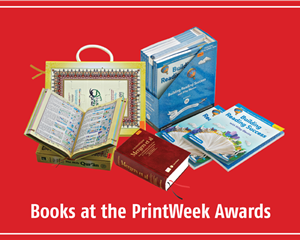Such a long journey: Women’s legacy in print
WhatPackaging? continually highlights women in the industry in our Women to Watch series. These women lead companies in printing, packaging, design, publishing, engineering, administration, or the shop floor.
08 May 2025 | By Anhata Rooprai
The invention of the printing press by Johannes Gutenberg and Johann Fust in the 15th century changed history, revolutionising communication and spreading new ideas. While the story of printing often focuses on male pioneers, women have always played a crucial, though overlooked, role in the industry.
In the early modern period, printers’ names were commonly listed on book title pages, but this often didn’t reflect the full picture. Many print shops were family businesses, with women playing key roles behind the scenes.
Daughters married printers, and widows continued their husbands’ work. Some remarried or passed the business to children.
Katherine Gerlach, who outlived three husbands, took over her second husband’s business and continued publishing under her name until 1592. Edmée Tousan, widow of royal printer Conrad Néobar, carried on his work in France, even using his trademark illustration to identify her press. Yolande Bonhomme, who married printer Thielman Kerver, kept the business running after his death in 1522.
In Ireland, Elizabeth Yeats, sister of poet WB Yeats, co-founded the Dun Emer Guild and later established the Dun Emer Press, which became the Cuala Press. She revived Irish bookmaking and published works by her brother and other prominent authors.
Virginia Woolf, alongside her husband Leonard, founded the Hogarth Press in 1917, printing works that mainstream publishers rejected. Over two decades, the couple printed 35 of 440 works by hand, with women like Barbara Hiles and Peggy Belsher also contributing to the press. Virginia’s sister, Vanessa Bell, frequently designed covers for the publications.
Women also made significant contributions to the technical side of printing. Beatrice Warde, a pioneering typographer, shaped modern design with her influential essay The Crystal Goblet.
Artists like Mary Cassatt, Hannah Hoech, and Beatrix Potter made their mark in printmaking, with Cassatt’s lithographs, Hoech’s photomontages, and Potter’s iconic Peter Rabbit illustrations.
Zuzana Licko’s digital type designs reshaped global typography, while Helene Pinet’s blend of traditional bookbinding with modern artistic techniques elevated the craft to an art form.
In India, Radhabai Subbarayan established a printing press to advocate for social reform and women’s education, joining influential figures like Kamini Roy and Sarojini Naidu, who used print media to fight for women’s rights and education. Begum Roquiah Sakhawat Hossain also challenged gender inequality through her writing, including her famous work Sultana’s Dream.
Women remain underrepresented in leadership positions, earn less than their male counterparts, and still struggle to gain acceptance on the shop floor, particularly in regions like India.
While women in the printing industry still face challenges, some are making strides. We highlight four formidable women in this issue of PrintWeek, in honour of International Women’s Day (pages 50-57). As we honour the legacy of women in printing, it is crucial to continue pushing for equal opportunities and leadership roles for women in the future.
Anhata Rooprai is a correspondent at PrintWeek and WhatPackaging?












 See All
See All